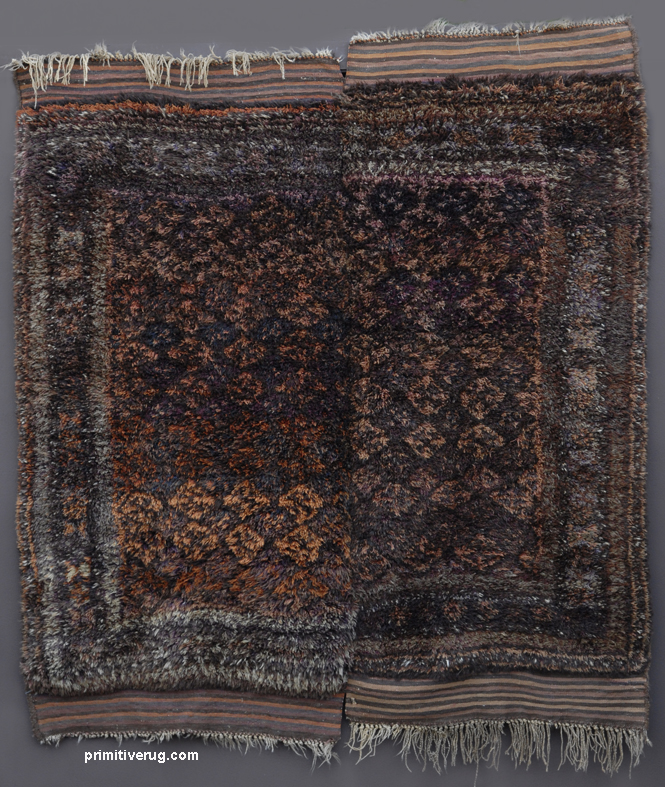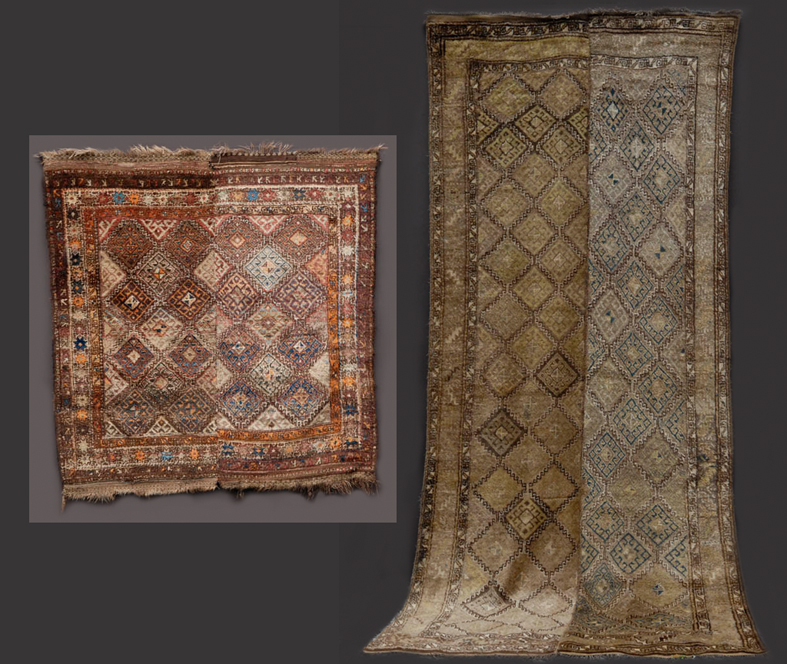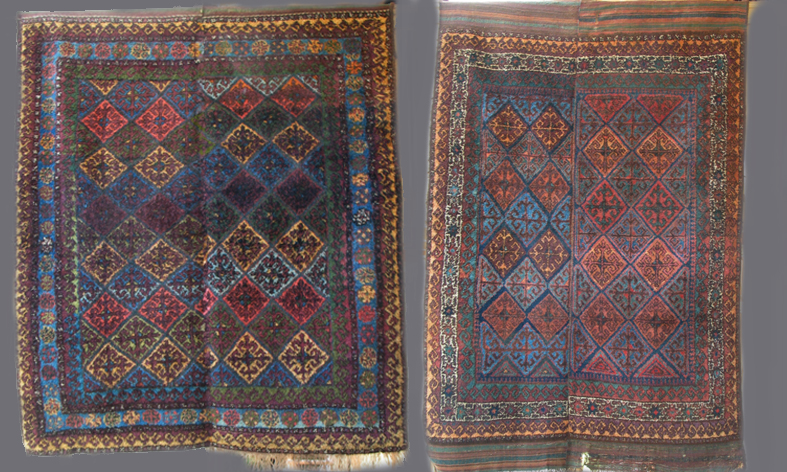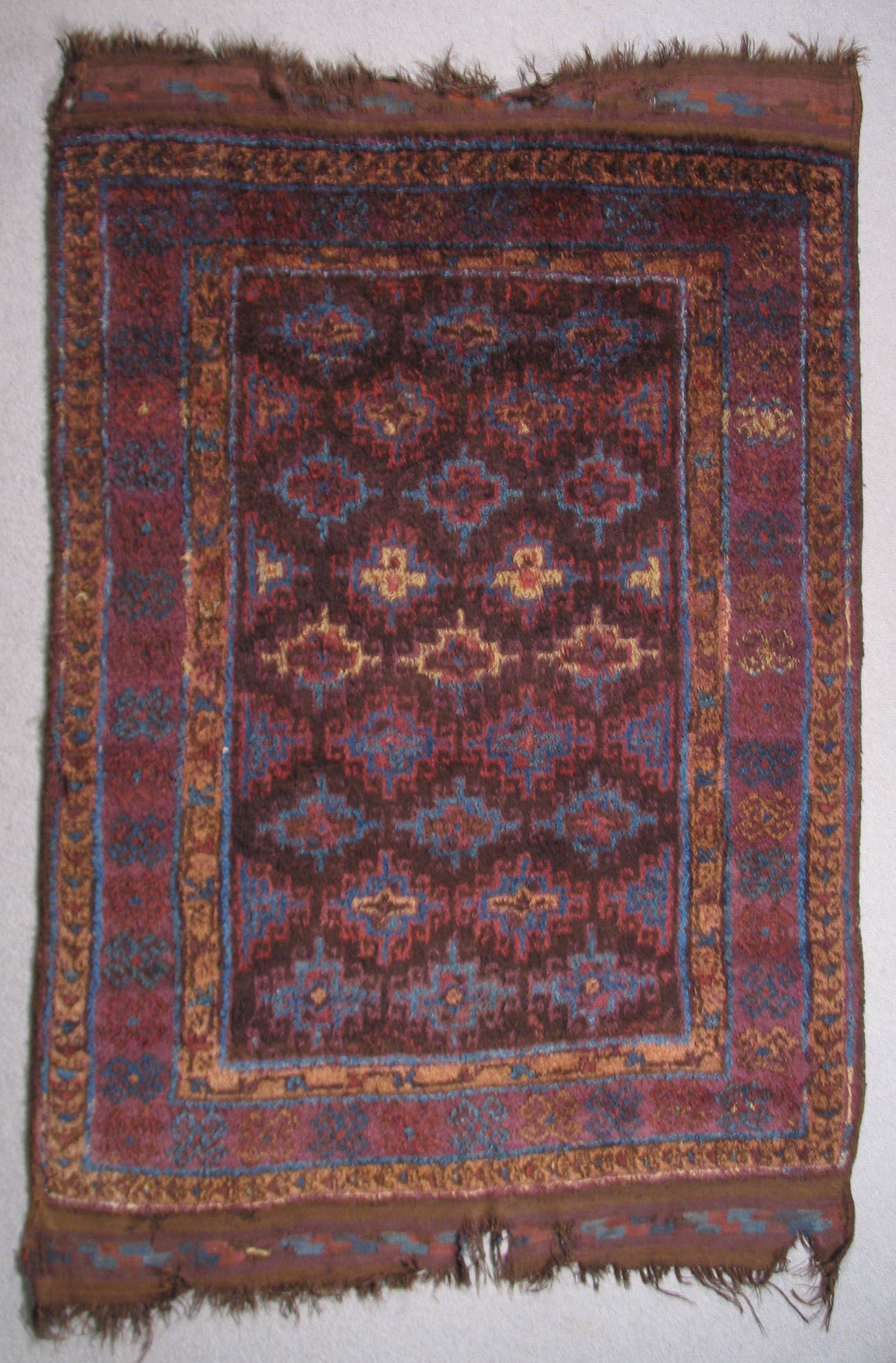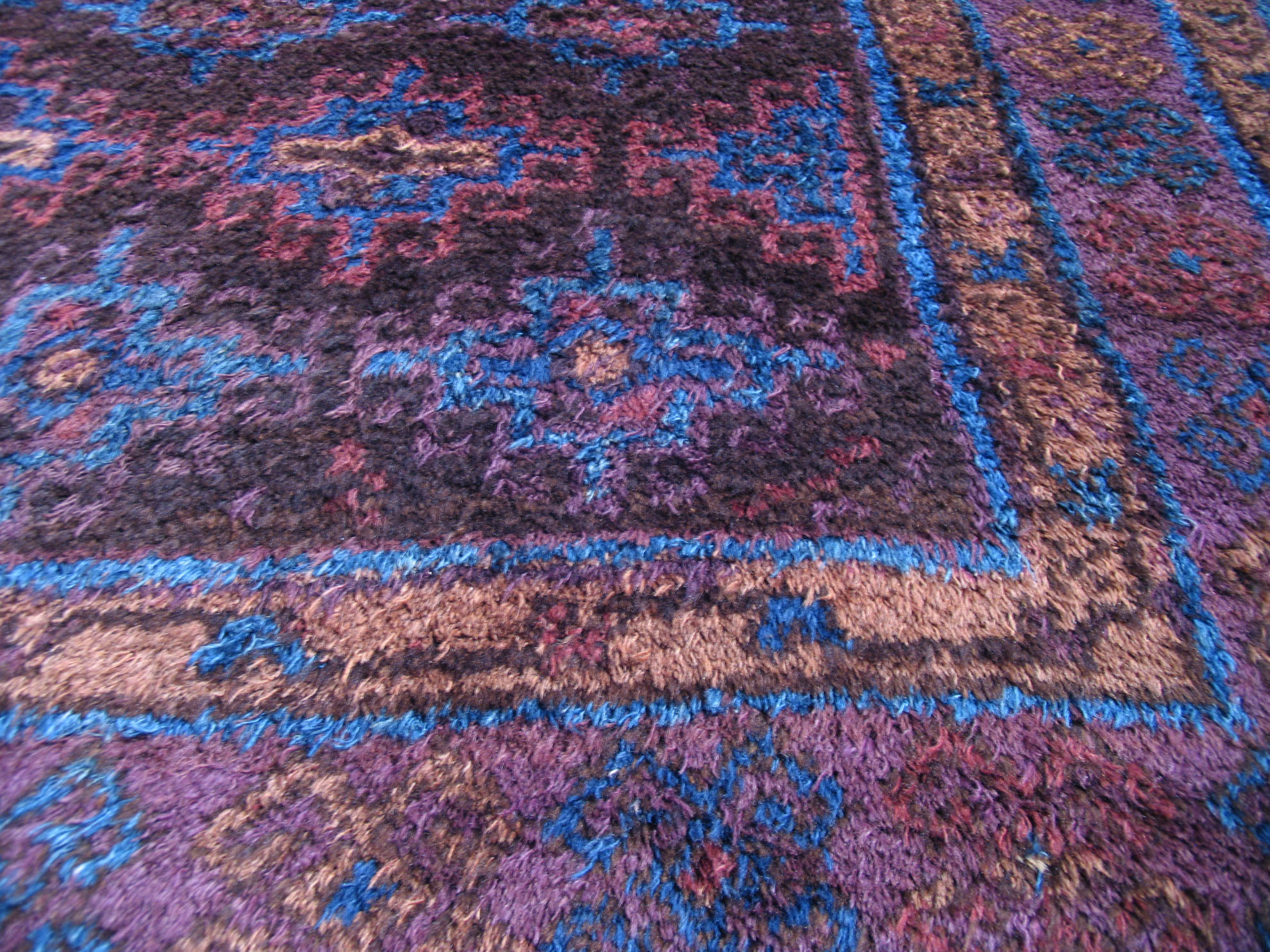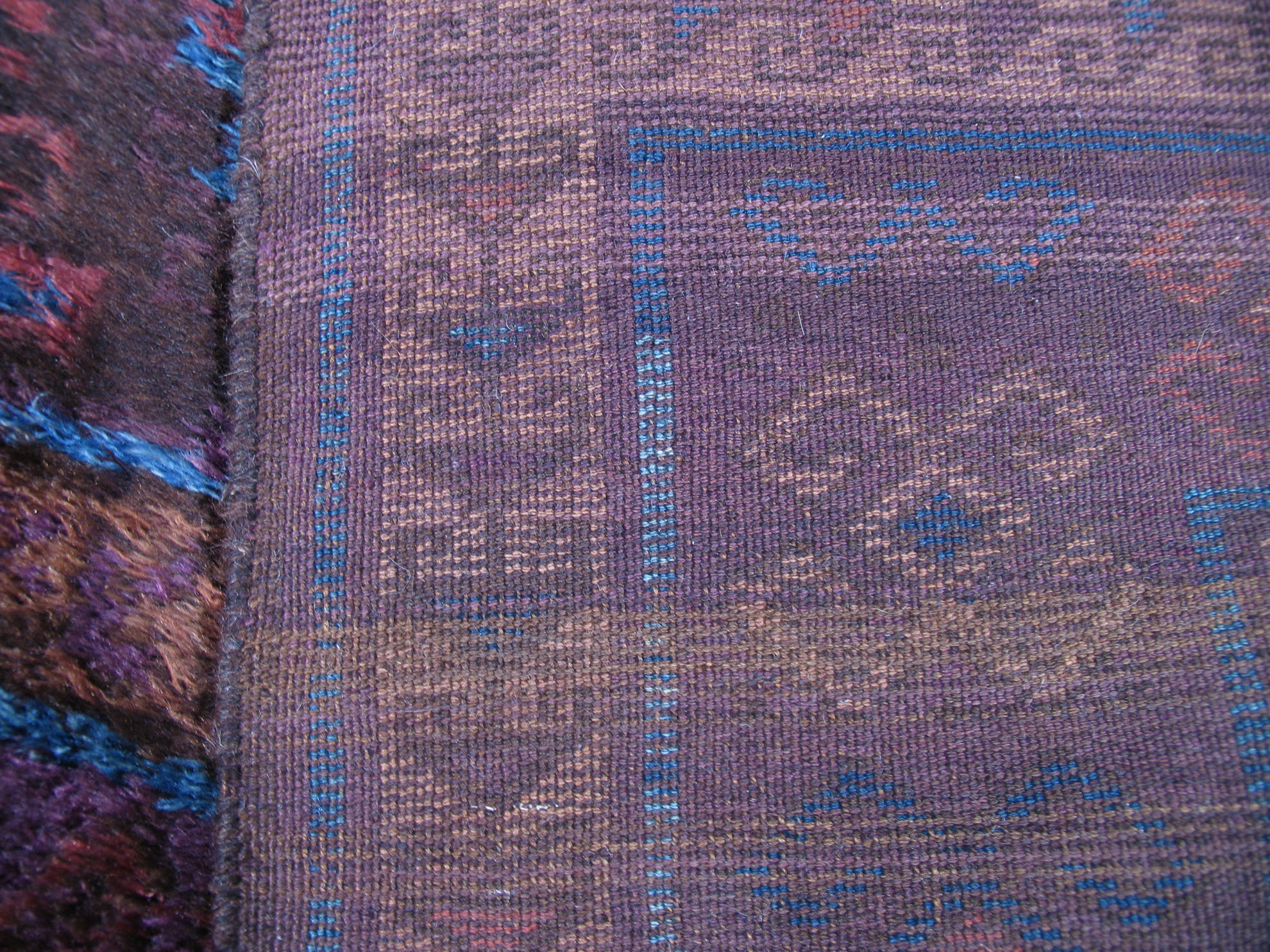
Taimani or Baluch Long Bedding Rug - This One's Huge!
The design elements used in this very long Taimani or Baluch bedding rug are almost identical to the Baluch bedding rug presented in the previous post. With exception of the acanthus leaf border.
Measuring 14 feet 4 inches x 6 feet 2 inches, this rug with two long panels stitched together - must have been made for a special purpose and is unusual. This is exactly twice as long as any Taimani two - piece bedding rug. Perhaps it was specially woven for a mud walled village or town situation. If these were meant to be sleeping rugs, why make one so large. This example suggests a rug meant for seating on the floor or the ground inside a massive tent. The Taimani were known to stay in Villages and Towns during the winter. 1 "Perhaps meant for the "mehman-khane", the room where guests were welcomed with nomad rugs. 2

In The Carpets Of Afghanistan, Parsons shows a two - piece rug which he describes as "Farah" from Farah Province. Parsons notes that the rug has a rough feel due to "the use of over spun yarn, a characteristic of the Farah production". 3 Eiland also states in Oriental Carpets, A Complete Guide that “Apparently these same nomadic Baluchis also produce the curious two-piece Baluchi rugs, woven in narrow strips and sewn together along the vertical axis. Some of these resemble Mushwani work, but it is likely they are woven by a number of nomadic groups, whose looms are too small to accommodate a large rug”. 4 Production would have extended South and West of Ghowr Province towards the Iranian border into Farah Province.

When I enquired with Arlette Bollag of NOMADENSCHÄTZE she made the following observations: "We know Taimani rugs from our first travels to Afghanistan in the late seventies, early eighties. At the time, there was a boom and a flourishing new production of little Taimani prayer rugs, none of them at that time older then maybe 20 years. The market was aflood with them, in the last 10 years we have hardly seen any. They had the same colour scheme your rug has, natural indigo, faded chemical dyes. (The little Baluch in the previous post) At the time, they were considered poor copies of Baluch prayer rugs and consequently sold very cheaply. Their charming naivete was appreciated by the public, but not by specialists, who insisted on the fact, that this was a rug without any tradition. In 1981 though, in Quetta, Pakistan, we found a Taimani rug that was more than a hundred years old, wonderful colours, wonderful wool. It was a little prayer rug, that unfortunately we sold in our last Baluch and neighbouring tribes exhibition. We have never seen a second example since 1981. It proves though, that there was a rug weaving tradition, maybe only existing in a small sub-tribe, that has old roots. Flatweaves attributed to the Taimani are very refined and elaborately designed. As far as we know, there is no specific literature on the subject. Old books still throw the two tribes together and call everything Baluch, and there are no known publications yet that concentrate on the subject. Maybe you will be the author of a comprehensive outlook??"
One more reason why I embarked on this project - I took Arlette's advice on board.
In conclusion there is evidence that these rugs were produced from Ghowr Province into Farah Province and possibly across the border into Persia. Woven by more than one group there are variations in design, although the weave is similar. In Afghanistan a tradition exists of weaving rugs in two separate strips, both long pile, short pile and kilims - then stitching the two pieces together.
Long Taimaini or Baluch rug collection The Author.
1 Winch. P Guide To Oriental Rugs Kangaroo Press 1991. 25
2 Wegner. Dr, D. H .G Pile Rugs of The Baluch and Their Neighbors, Part 2
Translated from German by Lola Froehlich, August, 1981. Reviewed by Dr. Wegner, May, 1985 Oriental Rug Review, Vol. 5, No. 4, July 1985
3 Parsons, R.D: Oriental Rugs Volume 3: The Carpets of Afghanistan Suffolk 1990 (1994)
4 Eiland, Murray L. Jr andMurray Eiland 111: Orientals Carpets, A Complete Guide Boston 1998. 138





